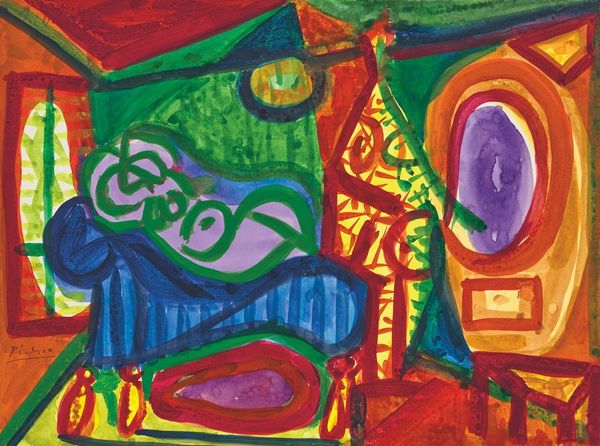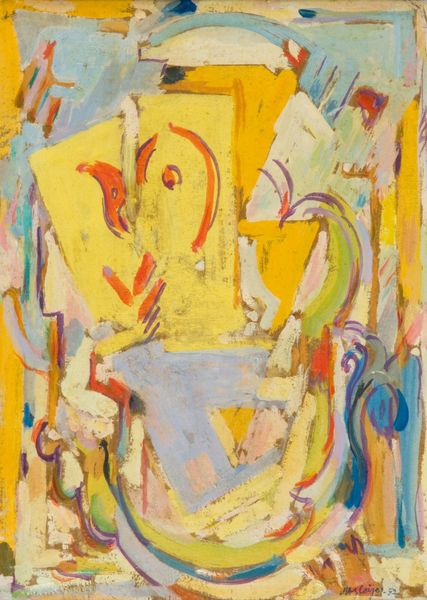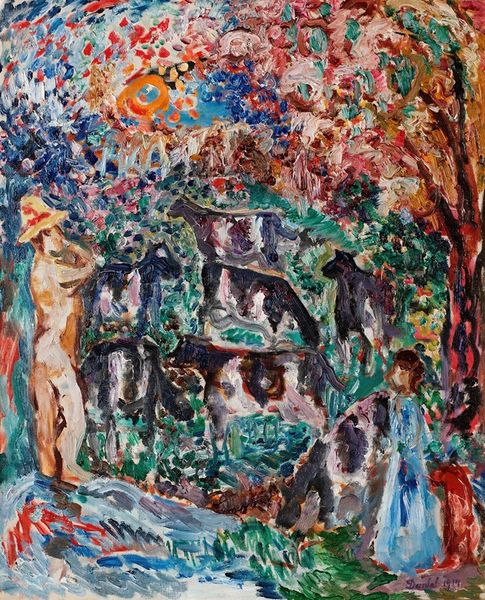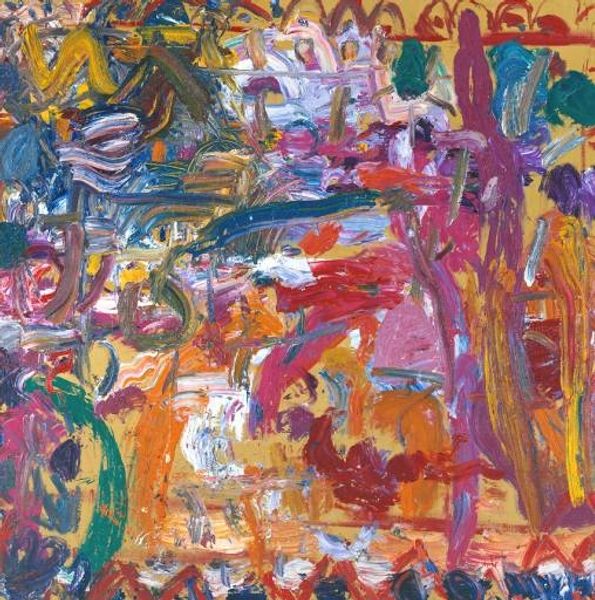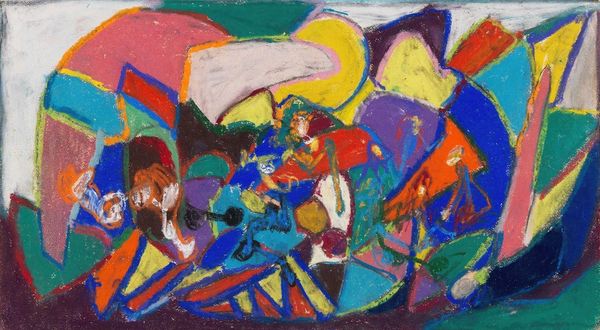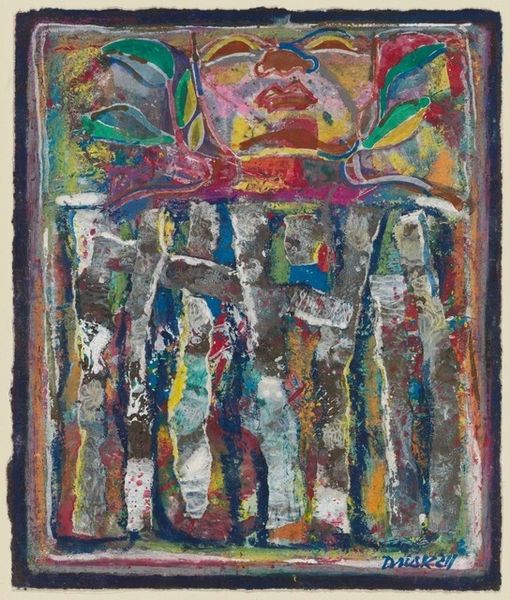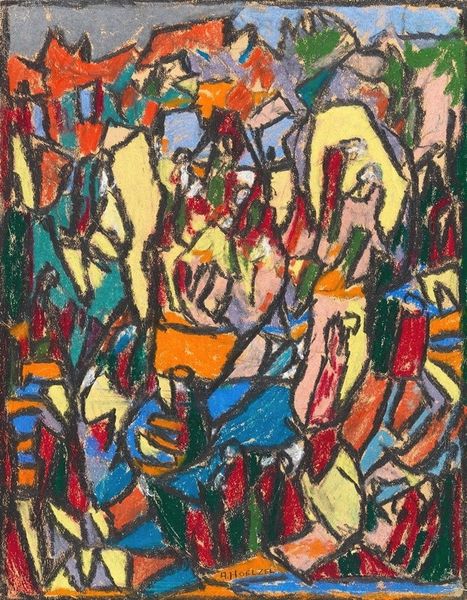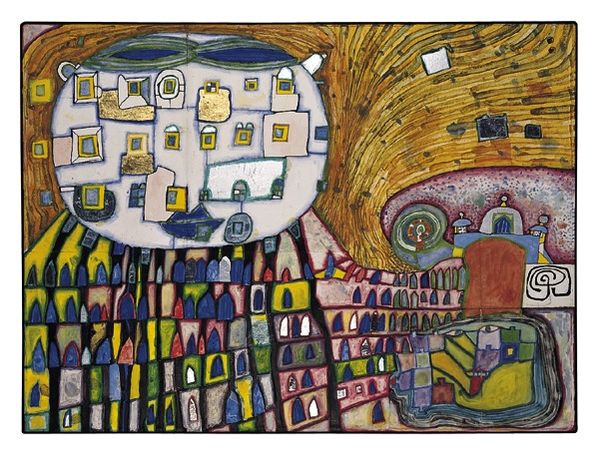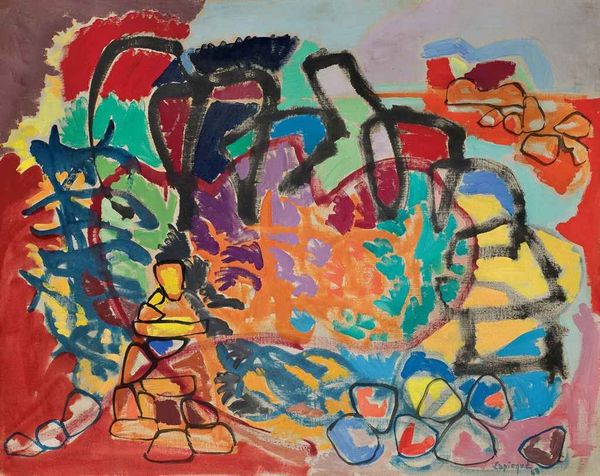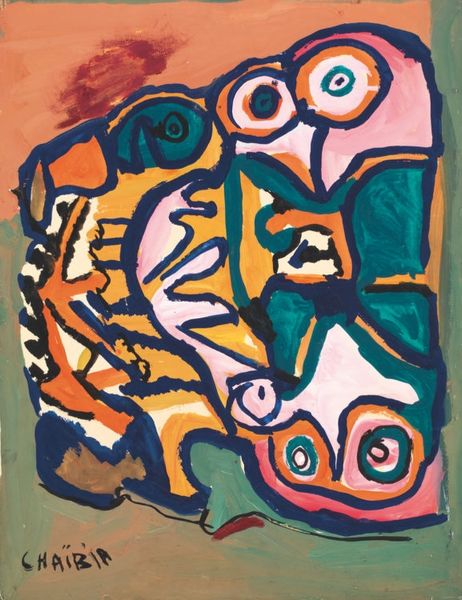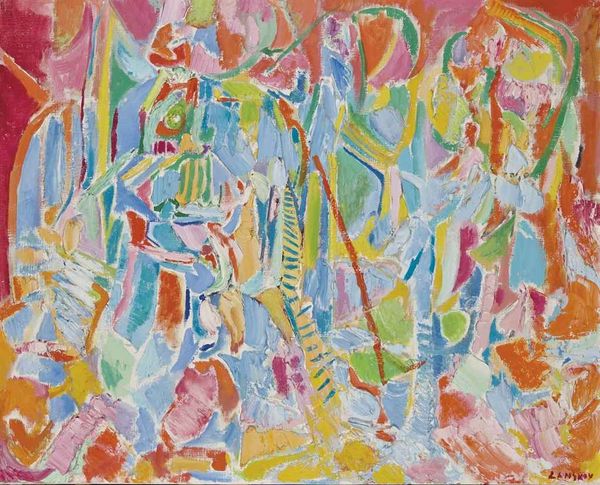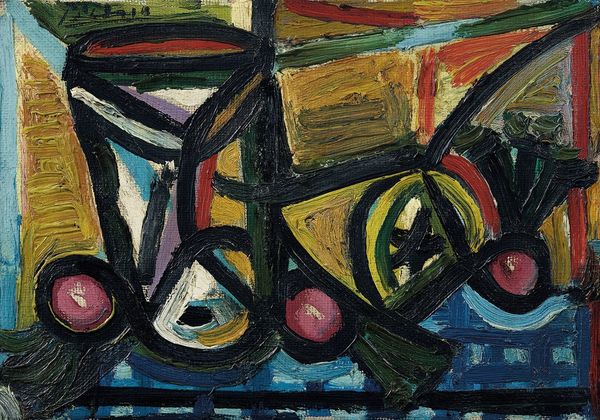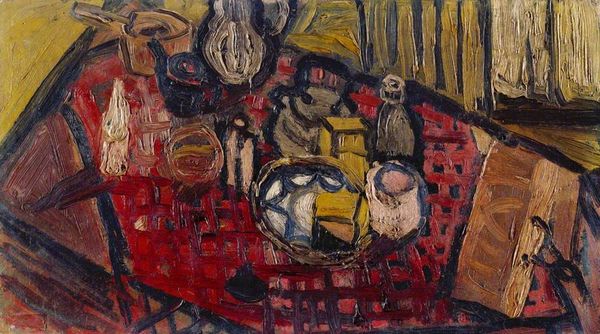
Dimensions: support: 2439 x 3658 mm
Copyright: © Gillian Ayres | CC-BY-NC-ND 4.0 DEED, Photo: Tate
Editor: Gillian Ayres' "Phaëthon," in the Tate collection, is monumental in scale. The vibrant colors and bold brushstrokes create a visually arresting image. How do you approach a work like this from a formalist perspective? Curator: The painting commands attention, doesn’t it? Observe how the artist uses colour: The juxtaposition of yellows, reds, and blues creates a dynamic tension. Consider the impasto technique and its effect on the painting's surface. Do you notice any recurring shapes or patterns? Editor: I see several, especially circular forms. What does the repetition of these geometric shapes suggest to you in the context of the overall composition? Curator: The repetition, perhaps, lends a certain rhythm. What are your thoughts about how this piece relates to other abstract expressionist works in terms of its visual language? Editor: It's a fantastic way of analyzing it, I will definitely look closer at those components now. Curator: Indeed, visual analysis provides a robust means to decode abstract art.
Comments
Join the conversation
Join millions of artists and users on Artera today and experience the ultimate creative platform.
tate 6 months ago
⋮
In 1987 Ayres moved to the border between Devon and Cornwall. By the 1990s her work remained highly expressive, but she began using more complex abstract compositions. As usual, Ayres named the work after finishing it. The title refers to the son of Helios, the sun god. Before falling to his death, Phaëthon drove his father’s flaming chariot across the skies so fast it caused the nearby landscape to catch fire. This might explain the use of yellow, red and orange, though Ayres cautioned: ‘I like the titles and care about them but they do not describe the paintings.’ Gallery label, October 2019

